|
As a nod to All Hallows festivities this week, we thought it would be fun to offer up a gallery of landscape design fiascos to make your skin crawl. We're calling it..... Scary things that can happen when you don't hire a landscape architect. Ghosts of Systems Past Above, a 30-year conglomeration of various pipe and fitting types, stuck together like beads on an underground ‘necklace’ that won’t even hold water. According to the landscape architect who snapped the photo, this piecemeal assembly fell apart at the mere touch of a hand. Detailed professional irrigation design saves water, time, and money. Your contractor might take the name “Chokecherry” too literally. According to experts, Prunus absolutely thrives when planted in extremely hot exposures with a minimum asphalt cover of 2” within the dripline of the tree. Not! A truly unprofessional installer will take measures to ensure that girdling at base of trunk occurs within two years of planting -- should the tree happen to survive that long. Sprinkler Head Spacing That’s Absolutely Deranged Smart designers say that when planting perennial bulbs you should simply toss a handful in the air and plant them where they fall so as to achieve more random, natural spacing. Looks like someone got confused and tried this technique with spray heads. That last tenant’s dry spot doesn’t stand a chance! How absurd! Maybe Dr. Seuss didn’t write horror stories, but the poor tree at left looks like it was perched on by an elephant. Despite valiant efforts by the property owner to install a ‘Seussian’ support of stacked CMU block (look again in the shadow), there’s nothing like a landscape architect when it comes to choosing the right plant for the right place. An LA will do this, one-hundred percent! 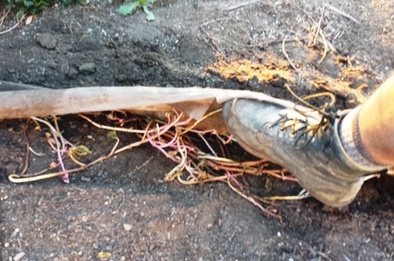 Creepy-Crawlies Everywhere Weed barrier? More like root enhancer. At first glance this almost looks like a damaged stretch of PVC conduit spilling its irrigation-valve-wire guts, but no -- it’s Virginia Creeper extraordinaire! Despite the weed barrier material, that creeper just kept right on creeping until it found a place to surface. A good reason to rethink weed barrier in organic situations. Power Company Topiary at its Finest What was I saying about right plant, right place? Design it well the first time or your local utility's pruning crew will step in to work a little magic of their own. Kind of like Edward Scissorhands, but with less amazing results. If trees had emotions, the triptych below marks an interesting progression. A Nightmare on Any Street Remember Little Red Riding Hood? That string of Friday the 13th films? Scary things can happen in the woods. Plant without the guidance of a landscape architect and you just might end up living in a deep dark forest of your own. This yard was beloved by its owners when first planted, but they neglected to leave room for future plant growth. Now that the trees have matured several years, it seems the residents may soon require the services of a kindly woodsman to access their front door. In planting design, there’s a balance between achieving a sense of fullness and completion at time of planting and setting yourself up to be overrun by your own landscape. Plants grow, after all, and sometimes when you’re getting started the end product is hard to imagine. For more discussion on landscapes as they mature and how to plant so your yard will look great ten years down the road, check out this article by Chuck Edwards, ASLA, our lead residential designer. 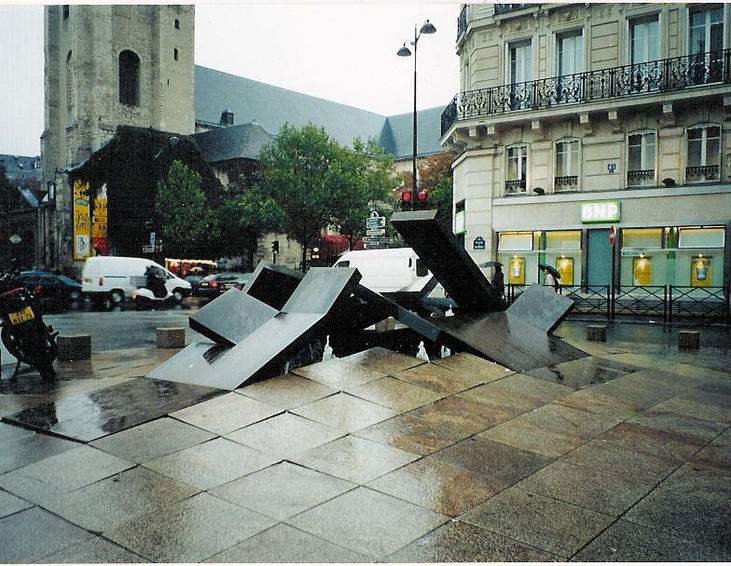 All-out Anarchy of Basic Infrastructure If you don’t hire a landscape architect your streetscape might self-destruct. Just kidding. This is actually public art -- spotted in Paris circa turn-of-the-last-millennium. It's also a great reminder that landscape architecture reaches beyond planting and irrigation design to include site planning, streetscapes and urban plazas, selection of furnishings and paving materials, site lighting, grading and drainage design, and a longer list of related specialties than a girl can name here. Now that Breckon landdesign has civil engineering in house we are thrilled to offer fully integrated, comprehensive site design solutions under one roof. From our new office building (if you haven’t heard already, we moved!) that, so far, does not seem to be haunted. Posted by Kim Warren
0 Comments
Driving around town lately I’ve noticed more and more Buckthorn in the urban landscape. Not the classic Tallhedge Buckthorn I remember from my university days, when there were few choices for cold-hardy shrubs that held to a narrow form, but a new lance-leaf variety that offers an interesting alternative for hedges, screens, and vertical accents. My recollection of the ‘Columnaris’ version of this plant was of an upright shrub with nondescript but evidently compelling blossoms that attracted a daunting number of bees when they came on. Indeed, this transformed the hedgerow along the entry walk to the Fine Arts Building at Utah State into a buzzing gauntlet that was definitely not for the apiphobic -- that is, anyone with a fear of bees (or allergy thereto). In contrast, this new-ish cultivar blooms and fruits only minimally, is lauded as a low-maintenance addition to the landscape, and adds much textural interest to your plant design palette. 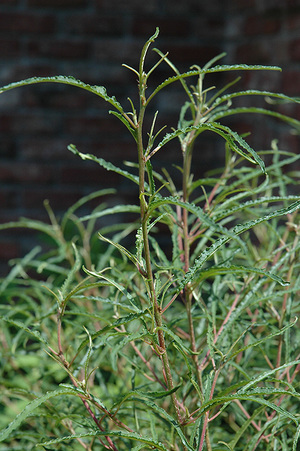 Foliage detail - Fine Line Buckthorn Foliage detail - Fine Line Buckthorn Botanical Name: Rhamnus frangula “Fine Line” USDA Hardiness Zone: 3-7 Extremely cold hardy to -50 degrees F. Flower: Insignificant, tiny (1/6” diameter). Cream-to-yellowish-green blossoms appear late May to early June. Fruit Production: Low. Negligible. Any seeds produced are typically non-viable. Leaves: Fine Line is a marvelous foliage plant. Narrow leaves result in a fine, feathery appearance. Lighter leaf color offers contrast to the deeper green of some other shrubs. Deciduous foliage turns bright yellow in the fall. Sun: Part to full sun. Water: Medium water use. Adaptable. Prefers well-drained soil. Size/Habit: 5 – 7’ high with a narrow, 1.5-2’ spread. History Glossy Buckthorn, one of the parents of ‘Fine Line,’ was first introduced to the United States from Europe about two hundred years ago. This plant’s primary appeal was cold hardiness. It was first envisioned as an ornamental shrub that could survive the harsh winters in and around the Great Lakes Region. In actuality, it turned out to be more adaptable than ornamental, and eventually ‘escaped’ into the upper Midwestern US and parts of Canada. Two cultivars emerged from this original introduction: ‘Columnaris,’ or the above-mentioned Tallhedge Buckthorn -- a fastigiate form that was widely used in the 1960s and 70s; and also the willowy-leafed “Asplenifolia” which took a rounded form, but with prettier foliage. In 1989, Ron Williams, a nurseryman in Green Bay, Wisconsin, discovered a unique seedling born of an accidental cross between the abovementioned buckthorn cultivars growing in his garden. Over the next decade, the plant was propagated by cuttings and developed for commercial distribution. In 2003, Mr. Williams licensed the plant patent to Spring Meadows Nursery in Michigan. Since then the Fine Line Buckthorn has been distributed nationally and continues to grow in popularity. 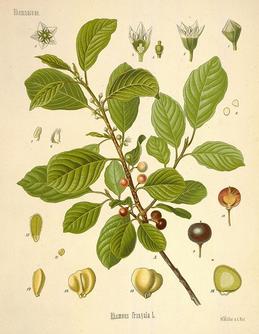 Human-Plant Interactions: Practical ▪ Symbolic ▪ Medicinal The Buckthorn story proves more interesting with the species, not the cultivars, so we’re looking up the family tree (pun intended) for this section: A cathartic experience. In medicine, Rhamnus frangula was historically used an as herbal supplement to relieve constipation. Typically administered as a tincture made from the bark or berries of the plant, it was best aged for a couple of years so as to reduce potency. Please note this antiquated remedy is not one we (or any true medical professional) would recommend today. Dyed in the wool. The bark and leaves of the Buckthorn species yield a yellow dye much used in Russia. When mixed with salts of iron, this same dye turns black. Indeed, the various parts of this plant display vast multi-chromatic potential. Unripe berries make a green-colored dye, readily taken by “woollen stuffs,” according to the literature. Alternately, ripe berries result in variable shades of blue and grey. Gunpowder, anyone? Once the bark is removed from Buckthorn stems and branches, the wood can be used to make charcoal with light, inflammable qualities that are far preferable to charcoal derived from other species. Gunpowder makers (doubtless a more exciting, if dangerous, profession than landscape architecture) sometimes refer to Buckthorn as ‘Black Dogwood.’ In Germany, it’s called Pulverholz, or ‘powder wood,’ for the same reason. Care ▪ Propagation ▪ Pests: By all accounts, Buckthorn is a low-maintenance choice, with no serious leanings towards disease or insect troubles. The Missouri Botanical Garden website describes Fine Line as a “restrained and versatile columnar accent.” That is, it tends to hold its narrow form naturally, without significant need for pruning. 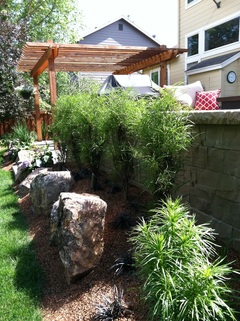 Fine Line Buckthorn Hedge in a recent BLD residential design Fine Line Buckthorn Hedge in a recent BLD residential design It’s deer resistant, too? One source claims that Fine Line is unappetizing to free-ranging ungulates like deer. A notable asset to be sure, but I’m inclined to be wary. Depending on the year, this might be more or less true of many plants. This plant sounds FABULOUS… Is there a downside? The species (Rhamnus frangula) can be weedy and self-seeding in some areas. In fact, it's actually illegal to plant in a number of midwestern states. The Fine Line cultivar, however, is non-invasive and minds its Ps & Qs quite nicely in our arid climate, thanks in part to non-viable seeds. In all, Fine Line Buckthorn is still a relative newcomer, but has earned a reputation as a tough, adaptable plant, one that's well worth trying in your own landscape. Posted by Kim Warren |
AuthorsArchives
January 2017
Categories |
Portfolio |
|

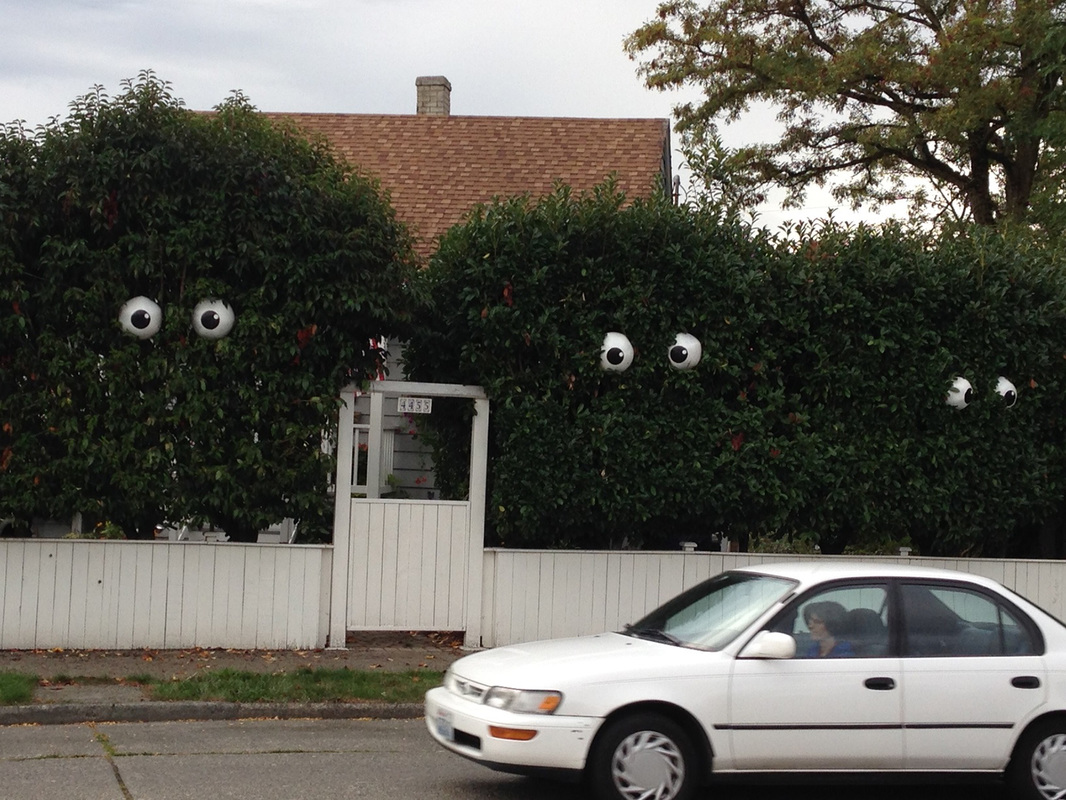
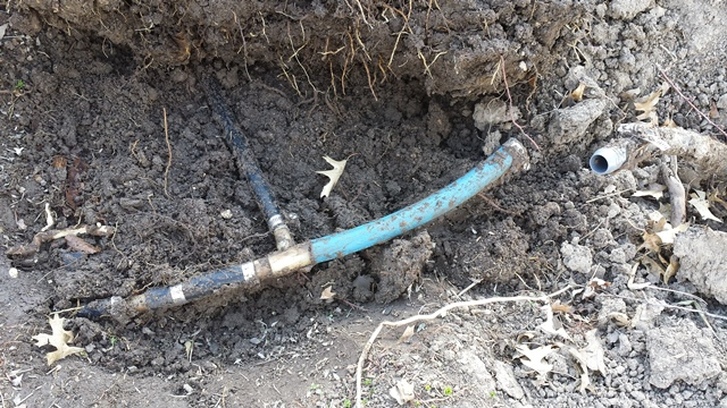
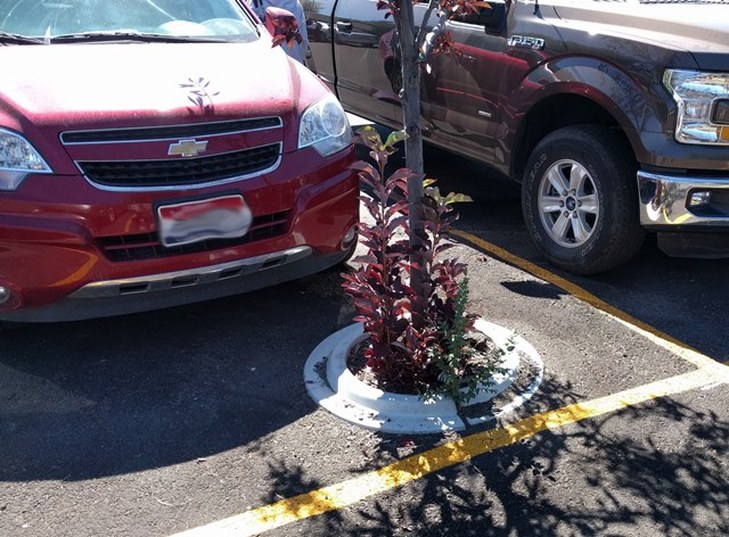
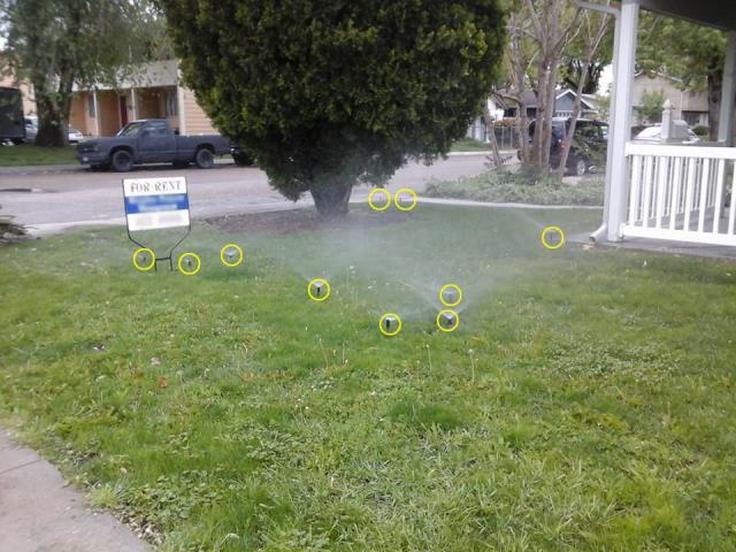

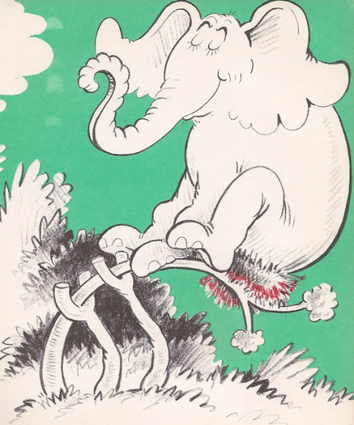
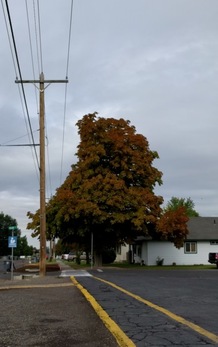
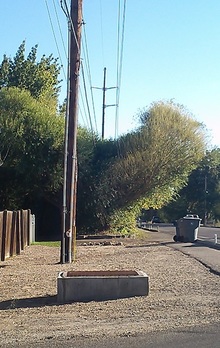
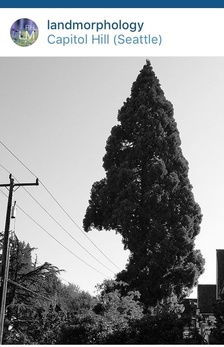
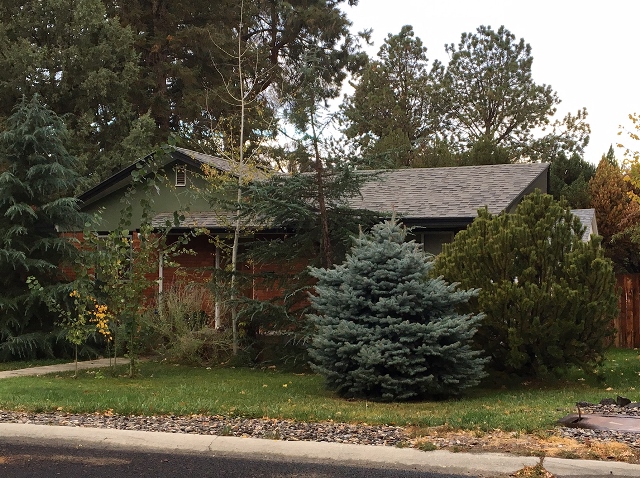
 RSS Feed
RSS Feed
